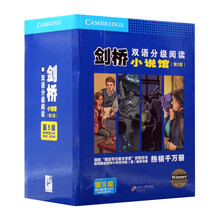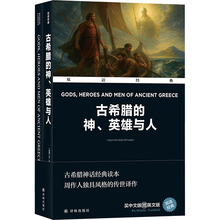诺丁山狂欢节
Notting Hill Carnival
【文化小课堂】
诺丁山狂欢节,每年8月底的最后一个周末在英国伦敦诺丁山地区举行的街头文化节,以非洲和加勒比的地区文化为主题。狂欢节共举行3天,规模仅次于巴西里约热内卢狂欢节,起源于1964年,是欧洲规模最大的街头文化艺术节。
The Notting Hill Carnival of London is the second biggest carnival1 in the world and the biggest street festival in Europe! It is always on the last Sunday and Monday in August which is a Bank Holiday (a public holiday) in the United Kingdom. On Sunday there is the Children’s Carnival. The Carnival takes place in Notting Hill, West London.
When did the first Carnival take place?
In the 1950’s people from the Caribbean, and in particular from Trinidad, emigrated to Britain. They took their customs and traditions with them.
People remembered the great Carnivals held in the West Indies and in 1964 a street festival took place in Notting Hill.
There were few people in costume2 dancing in the streets and carrying steel drums in this first festival. However, it was a great success. Since then Carnival has taken place every year in Notting Hill and it has grown into an enormous3 multicultural arts festival.
Carnival celebrations normally take place before Easter, in the month of March. However, in Britain the celebrations take place in August when the weather is warmer. During the year the West Indian families prepare their beautiful costumes and practice playing their steel drums. They also work on their floats.
On the days of Carnival, Notting Hill is full of colour, excitement, music, noise and people. About two million people go to Carnival every year!
People with wonderful costumes dance in the streets and steel bands play Calypso, the traditional music of the West Indies.
They also play Soca, the traditional music of Carnival, a mixture of Soul and Calypso.
It is also possible to hear reggae, hip-hop and jazz. A parade with colourful floats travels seven and a half kilometers through the streets of London. There is a prize for the best float. It is sometimes almost impossible for the public to walk along the streets—the only way to move is to dance!
In the streets food vendors4 sell meat and vegetable patties, salted fish and other delicious West Indian specialities.
Everyone has a good time!
伦敦的诺丁山狂欢节是世界上第二大狂欢节,同时也是欧洲最盛大的街头节日!该节日定于8月的最后一个星期日和星期一,正值联合王国的银行假日(一种公共节日)。星期天的狂欢属于孩子们。整个狂欢节在伦敦西部的诺丁山举行。
第一次狂欢节是什么时候呢?
20世纪50年代,加勒比海地区——尤其是特立尼达岛地区的人们移民到英国,带去了自己的风俗和传统。
人们不能忘记在西印度群岛举行的盛大狂欢节,也不会忘记1964年在诺丁山举办的一次街头节日。
第一次狂欢节时,只有少数人穿着民族服装在街上载歌载舞,一边击打着钢鼓。不过,这一次狂欢节非常成功。自此,诺丁山上每年都会举办狂欢节,后来逐渐演变成一种盛大的多元文化艺术节。
狂欢节通常都是在复活节之前举行,也就是3月。而英国的狂欢节却在8月,因为此时的天气逐渐回暖。来自西印度群岛的家庭会花费整年的时间来准备漂亮的服装,还会练习钢鼓。同时,他们还要装扮彩车。
每逢狂欢节,诺丁山总是色彩斑斓,歌舞喧腾,热闹非凡。每年大概会有200万人参加这里的狂欢节!
身着漂亮舞蹈服的人们在街上跳舞,钢鼓乐队会演奏西印度的传统歌曲卡利普索。
他们还会演奏狂欢节的传统音乐,也就是混合了灵乐和卡利普索名歌的灵卡乐。
同时,在狂欢节上还有可能听到瑞格舞曲、嘻哈和爵士,还会有彩车列队沿着伦敦的街道游行7.5公里。而表现最佳的彩车还能赢得奖赏。有时,人群想要步行通过这些街道几乎不大可能——唯一的移动办法就是跳舞!
在街道上,还有小货摊贩卖肉馅儿和蔬菜馅儿的馅饼、咸鱼,以及其他美味的西印度特产。
人人都尽兴而归!
【注释】
1. carnival ['kɑ:nɪvl] n. 狂欢节;嘉年华;节日,联欢
2. costume ['kɔstju:m] n. 戏装;演出服,服装
3. enormous [i'nɔ:məs] a. 巨大的,庞大的;极恶的;凶暴的
4. vendors ['vendəz] n. 摊贩(vendor的名词复数);小贩;(房屋等的)卖主
展开










